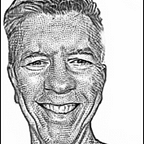Antifragile: Recognize and Feel the Fear…
Last week I attended a seminar hosted by Thanh Pham, the creator of the company called Asian Efficiency. His approach to his business is to provide what i call “life hacks” that help people be more productive. Simple things like turning on the copy history on your Mac or PC so you can grab something you copied 3 “cuts” ago and paste it somewhere else. Anyway, what I came away with is that, without thinking about it, I am doing the same thing for Antifragile — I am continually doing tactical things that make Antifragile “actionable”. And what I realized is that sharing my experiences to make Antifragile actionable will likely be valuable to others that don’t know where to start on their Antifragile “journey”. An “aha” moment. So, here I am with my first article on making Antifragile “actionable”.
In this article I want to share one of those life hacks to be more Antifragile… to “Feel the fear and do it anyway”. This is a phrase coined by Susan Jeffers in her book entitled the same — Feel the Fear and Do it Anyway. I read this book a couple years ago, and have been practicing this Antifragile tactic ever since.
So what does this mean, really? Feel the Fear and do it anyway. First, this requires we are conscious and can recognize the feeling (specifically “fear”) when it shows up. For example, you know you need to provide some difficult feedback to an employee… and fear shows up. Many times we don’t take the time to acknowledge that feeling, but if you stop and think, you will likely “feel the fear”. It is that feeling that shows up after the thought goes through your mind. Many times it even shows up as a physical and emotional sensation. At that moment you have a decision to make — what action will you take? Will you schedule a meeting with the employee or will you move on to something else because you don’t want to take the more difficult step of providing the feedback? You might get an angry response from the employee, and for some (including me) I don’t like to make people angry. My tendency is to not take action because I don’t want to experience anger. However, I know from past experience that if I feel the fear and do it anyway, in the long run things work better and the employee usually appreciates the feedback (once they have a chance to think about it). The action you take after the fear is felt is the key to doing the right/best thing vs nothing at all.
I have been working to keep this practice in the forefront of how I run my life ever since I read that book. It keeps me doing things I would normally not do, it causes me to act when I have a tendency to move to something else so I don’t have to take action, and it helps me realize that if I take the “scarier” road I usually benefit from the outcome. And, as an added benefit, just recognizing that I have the choice gives me more control, regardless of the decision I make.
Building this practice has caused me to take a different approach to my career, for example. (I wish I had done this earlier, but the present is all we have.) Looking back over my career, I recognize I have lived with low grade fear my whole career. It was the fear that my actions might expose my weaknesses. It caused me to shy away from taking action, choosing instead to fly under the radar if possible. If I could get away with not taking action, that is what I did. And while it may have saved me the challenge of finding a new job at times, it also prevented me from growing and evolving my career skills. And, by the way, it still didn’t save me from finding a new job in a few instances, likely because my fear-driven behavior was recognized as limiting my effectiveness. My approach is different now — I recognize the feeling, I consciously choose what I think is the best approach (not the least risky) and I take action before I convince myself otherwise. It is so refreshing and energizing to know I did what was best — whatever the outcome!
I used to tell my kids, “Just do your best. After all, that is all you can do”. Now I practice what I preached! (Recognizing and) feeling the fear, and doing it anyway!
If you liked this article and want more of where this came from, please follow me on Medium. My goal is to provide helpful suggestions that you can apply to your life to make it more full, fun and interesting and help you thrive on change (Antifragile!). I do this from the perspective that if it works for me, likely it will work for other people!
